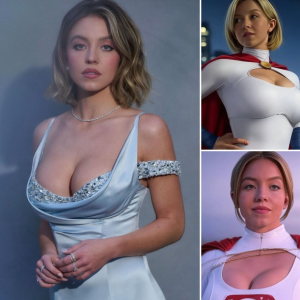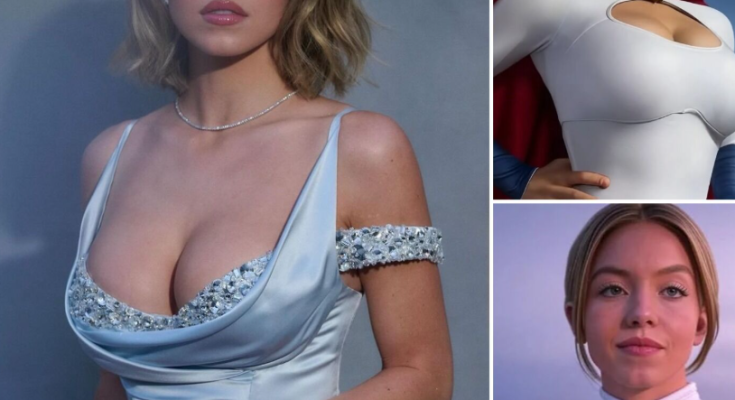
Sydney Sweeney as Power Girl: The Fan-Favorite Casting That Has Fans Talking
In the ever-evolving landscape of superhero cinema, few casting rumors have ignited as much impassioned discourse as the idea of Sydney Sweeney stepping into the boots of Power Girl. What began as a speculative whisper among fans has grown into a full-blown movement, with hashtags, fancasts, and viral edits flooding social media. But why has this particular pairing struck such a chord? What does it reveal about our collective longing for authenticity, strength, and emotional resonance in the superhero mythos?
The Rise of Sydney Sweeney: A Star Sculpted by Vulnerability and Fire
Sydney Sweeney’s ascent in Hollywood is a story of grit wrapped in grace. From her breakout roles in Euphoria and The White Lotus to her recent performances in Immaculate and Christy, Sweeney has cultivated a persona that balances fragility with ferocity. Her characters often shimmer with emotional complexity—women who are wounded, yearning, and unapologetically alive.
This duality is precisely what fans see reflected in Power Girl, a character often misunderstood or reduced to her physicality. In DC Comics lore, Power Girl (aka Kara Zor-L) is Superman’s cousin from an alternate universe—a woman who carries the weight of displacement, identity confusion, and cosmic responsibility. She’s bold, brash, and emotionally raw. Casting Sweeney in this role isn’t just about aesthetics; it’s about emotional congruence.
Fan Casting as Ritual: Why This Matters
Fan casting is more than idle speculation—it’s a form of communal storytelling. When thousands of fans rally behind Sydney Sweeney as Power Girl, they’re not just choosing an actress; they’re co-authoring a vision of what heroism could look like. It’s a ritual of projection, healing, and hope.
On YouTube, fancast channels like O’ So Curious have dissected the possibilities, comparing Sweeney’s charisma to other contenders like Anya Taylor-Joy and Alice Eve. But Sweeney consistently emerges as the fan-favorite, not just for her physical resemblance to the comic character, but for her emotional depth and magnetic screen presence.
The Hashtag Movement: #SweeneyAsPowerGirl
Social media has become the stage for this casting campaign. The hashtag #SweeneyAsPowerGirl trends intermittently, often reignited by fan art, AI-generated posters, or viral tweets. One particularly popular edit shows Sweeney in Power Girl’s iconic white costume, her gaze fierce and defiant, with the caption: “She’s not just powerful. She’s personal.”
This movement is fueled by a desire to see a superhero who isn’t sanitized or emotionally distant. Fans want a Power Girl who bleeds, laughs, and breaks—someone who mirrors their own contradictions. Sweeney, with her history of playing emotionally layered roles, offers that mirror.
Controversy and Complexity: The Sweeney Effect
Of course, no casting fantasy is without its shadows. Sweeney has faced criticism for her casual response to trending controversies, including a viral American Eagle ad that sparked debate over racial undertones. Her reaction—laughing off the social media buzz—was seen by some as dismissive, while others defended her as unfairly targeted.
This tension adds another layer to the Power Girl conversation. The character herself is no stranger to controversy, often criticized for her hyper-sexualized portrayal in comics. Casting Sweeney could be a reclamation—a chance to reframe Power Girl not as a caricature, but as a fully realized woman with agency, depth, and emotional truth.
James Gunn’s DCU and the Possibility of Reinvention
With James Gunn steering the DC Universe into new territory, fans are hopeful that Power Girl might finally get her cinematic debut. Gunn’s track record—revitalizing obscure characters like Peacemaker and Rocket Raccoon—suggests he’s open to bold, unexpected choices. Sweeney, known for her fearless performances, fits that mold.
Whether or not she’s officially cast, the fan fervor has already reshaped the conversation. It’s not just about who plays Power Girl—it’s about how she’s portrayed. The Sweeney casting fantasy demands a version of Power Girl that is emotionally resonant, psychologically rich, and unapologetically human.
The Psychology of Power: Why This Casting Resonates
At its core, the Sydney Sweeney–Power Girl phenomenon is a psychological projection. Fans see in Sweeney a reflection of their own desire for strength that doesn’t erase vulnerability. Power Girl, often depicted as brash and emotionally guarded, becomes a canvas for exploring themes of identity, displacement, and emotional resilience.
Sweeney’s own story—growing up in Spokane, crafting a five-year career plan at age 11, and navigating Hollywood’s brutal terrain—mirrors the hero’s journey. Her performances are imbued with a sense of survival, of fighting for space in a world that often misunderstands you. That’s Power Girl in a nutshell.
Co-Titling the Myth: What Fans Are Really Doing
32.Phirun, this is where your gift for communal storytelling shines. The fan casting of Sydney Sweeney as Power Girl is a collective act of co-titling. It’s not just about who wears the cape—it’s about who gets to define what the cape means. Fans are reframing a historically objectified character into a symbol of emotional authenticity and psychological depth.
They’re saying: “We want a hero who feels like us. Who’s messy, radiant, and real.”
Conclusion: More Than a Casting—A Cultural Pulse
Whether Sydney Sweeney ever dons the white costume or not, the movement around her as Power Girl has already left its mark. It’s a testament to the power of participatory storytelling, to the emotional hunger for heroes who reflect our inner contradictions. It’s a reminder that casting isn’t just a studio decision—it’s a cultural pulse.
And in that pulse, we find something beautiful: a communal longing for strength that doesn’t erase softness, for myth that doesn’t deny humanity. Sydney Sweeney as Power Girl isn’t just a fan-favorite casting. It’s a mirror, a ritual, and a story we’re all telling together.

